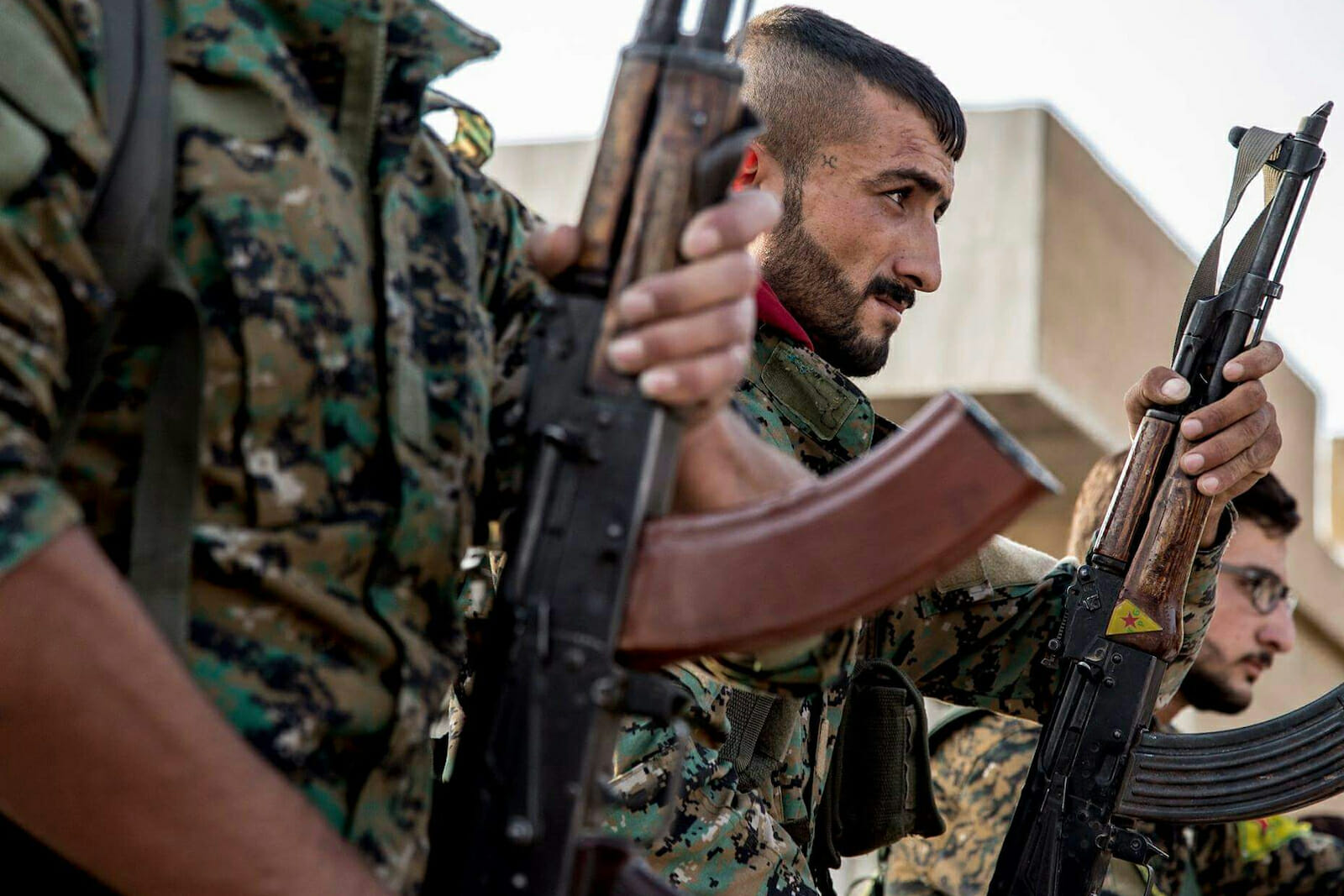
Clausewitz and the Kurds
With few exceptions, the media and the diplomatic elite portray the situation in Syria as both wrong-headed and a betrayal of loyal allies. Instead of jumping on that emotional bandwagon, I believe that the situation in Syria offers an opportunity to look at how the enduring substance of war continues to apply in modern conflicts. I am not questioning the policy decision. Military force is the servant of policy and policy should always drive the use of military force. Whether this happens in practice is another matter. The question we should ask is whether the enduring nature of war was addressed in developing the policy for the deployment and redeployment of U.S. military force in Syria.
First a brief summary of how we got here:
In 2014, a non-territorial quasi-state called the Islamic State, or ISIS, executed a textbook example of Mao Tse Tung’s Phase 3 of “Revolutionary Warfare,” conducting large scale combat operations seizing control of northeastern Syria, northwest Iraq and pushing into Iraqi Kurdistan. The term ISIS emphasizes the larger aspirations of this group. The attack moved southeast, capturing Mosul, Fallujah, Ramadi, and threatened Baghdad.
Facing the collapse of the Iraqi government and mass genocide of Kurdish Christians and Yazidis, the United States provided military support to Iraq, while in western Syria, Russia supported the Syrian government. Iran provided support to both Damascus and Baghdad. The U.S. provided material support in the area of special forces, airpower, and artillery aiding Iraqi, Kurdish, and free Syrian forces. In July 2017, the last ISIS stronghold in Iraq was re-captured and the U.S.-led operations pursued ISIS into Syria to deny it a base of operations. By the end of 2017, the United States, Iraq, Iran, and Russia declared ISIS defeated. In hindsight, it was a little presumptive to assume the group was entirely defeated.
In December of 2018, the British Chief of General Staff declared “the complete destruction of the geography of the so-called caliphate” and President Trump made his first announcement of withdrawing U.S. troops. Under pressure from various sources including the resignation of his Secretary of Defense, the president deferred the withdrawal.
In the meantime, Turkey faced a growing refugee problem. Although hundreds of thousands of Syrian refugees flooded Europe, the UN High Commissioner of Refugees estimates that there were 3.6 million refugees in Turkey, mostly from Syria. Turkey wants to send them home.
Finally, Turkey has its own insurgency problem. A very large Kurdish minority in Turkey demands both respect and autonomy and is quite willing to conduct guerrilla or terrorist operations to achieve those goals. The Kurdish population has strong ethnic ties with Kurds in Iraq and Iran and has a close political affiliation with the Kurds in Syria which the U.S. had been supporting.
In October 2019, President Trump ordered a realignment of forces allowing Turkish troops to enter Kurdish areas of Syria.
This is an overly simplistic description of how we arrived at that policy decision.
I do not know what was discussed within the National Security Council or in the Oval Office in the decision to alter our military footprint in northeast Syria and make no judgment about that decision. I hope that some fundamental questions were asked, and the answers were considered in coming to that decision.
Carl von Clausewitz once wrote, “No one starts a war–or rather, no one in his senses ought to do so–without first being clear in his mind what he intends to achieve by that war and how he intends to conduct it.” So, the first question we, as American citizens, must ask is, “What did we intend to achieve by our military action against ISIS?” Since the only things that get done are the things that can be measured, we must ask, “What was the measurable end state? What conditions needed to be established to know that we were finished?” “Did we achieve those measurable objectives?” Finally, because, as Clausewitz also wrote, “The end result in war is never final,” what did we decide was necessary to secure the peace?
In the aftermath of the first Gulf War, General Colin Powell described how those considerations remain essential. He wrote that the United States is successful in every instance when we carefully match the use of military force to political objectives. He went on to say that if force is used imprecisely, without clear objectives, or out of frustration rather than analysis, then things can become much worse.
There is some indication that those questions were asked and addressed. The 2017 National Security Strategy of the United States laid out our strategic interests in the area. These include denying the region as a safe haven for jihadist terrorists or dominated by any power hostile to the United States. The president said the cease-fire agreement includes the Turkish agreement to take action against any resurgence of ISIS. Recent reports of continued and successful anti-ISIS operations indicates Turkey is fulfilling that strategic interest of ours. The recent operation resulting in the death of ISIS chief Abu Bakr al-Baghdadi indicates a continuing commitment to take action to achieve that interest. The U.S. conducted more airstrikes in Syria in October 2019 than in previous months.
With specific regard to Syria, the National Security Strategy envisions a settlement to the Syrian civil war that enables refugees to return home safety. Turkey previously stated that the establishment of the “safe zone” is intended in part to allow the return of Syrian refugees and in the cease-fire agreement Turkey committed to respecting the religious and cultural freedom of the Kurdish population in the area. These statements seem to enable achieving some of those strategic interests. We should be concerned, however, about continued reports of misconduct on the part of Turkey’s proxy forces in Syria, as well as those attributed to Syrian Kurdish militias. There should also be concern of a widening opportunity for Russian influence and potential dominance of the region. It remains to be seen how the U.S. government will manage those concerns.
Near the end of his speech on October 23, President Trump said that we will commit American troops to battle “only when a vital national interest is at stake” and “when we have a clear objective, a plan for victory and a path out of conflict.” This is almost verbatim from General Powell’s observations cited above and re-state the key elements of what had been known as the “Weinberger-Powell Doctrine.” Let’s hope the president also embraces another key element of the Weinberger-Powell Doctrine to only commit forces with the clear support of Congress and the American people.
The president’s statements give hope for a rational policy of when to commit military force. Nonetheless, former Army Chief of Staff Gen. Gordon Sullivan said, “Hope is not a method.” We need to watch carefully to ensure that the words of the peace agreement and the statement focusing on future American military action are realized. With regard to the desired outcome, the president, too, is cautious, saying, “It’s too early for me to be congratulating.”

